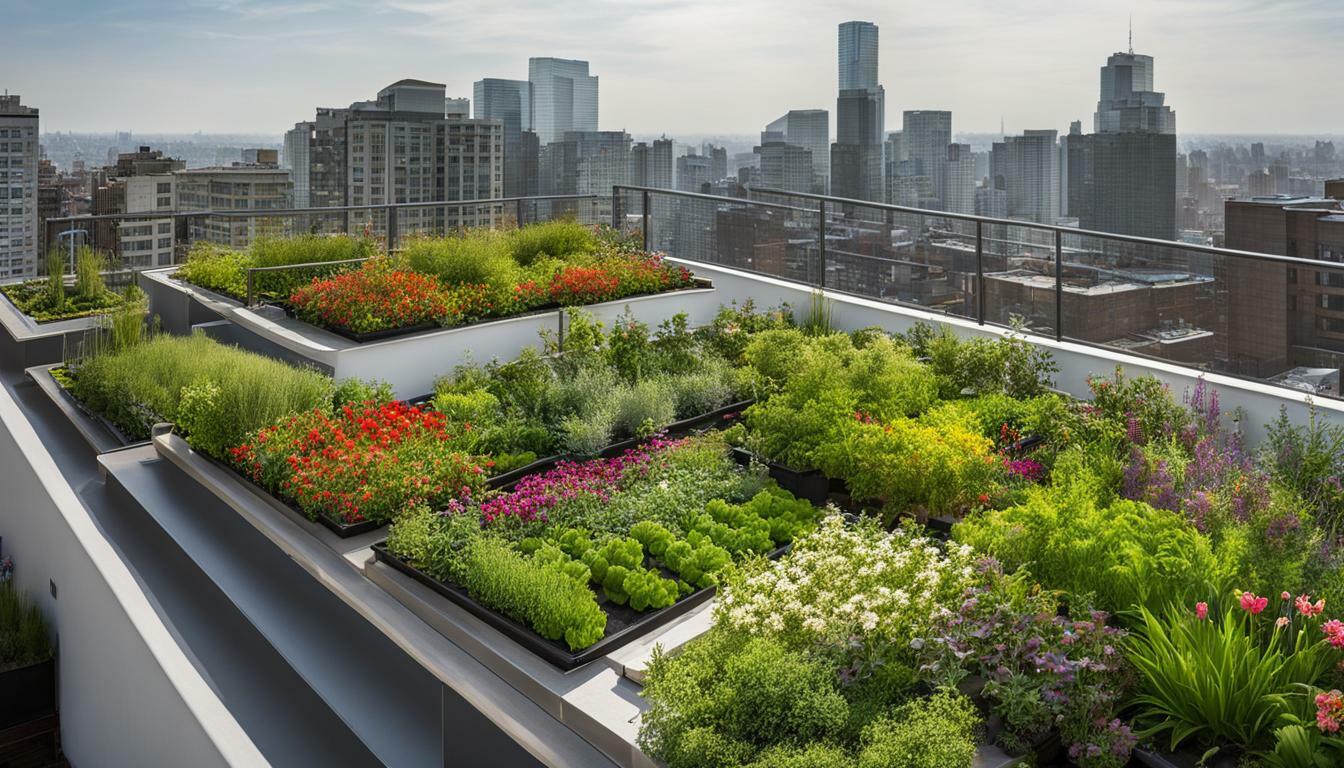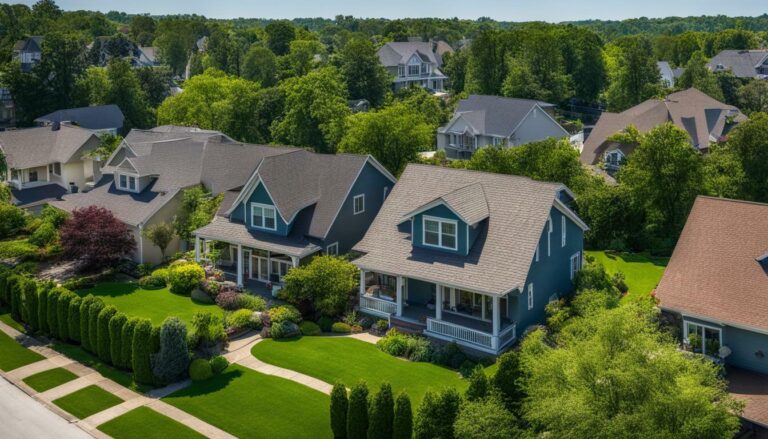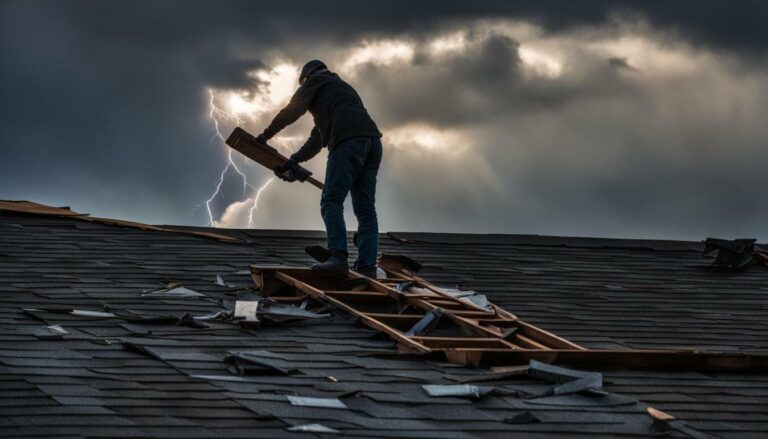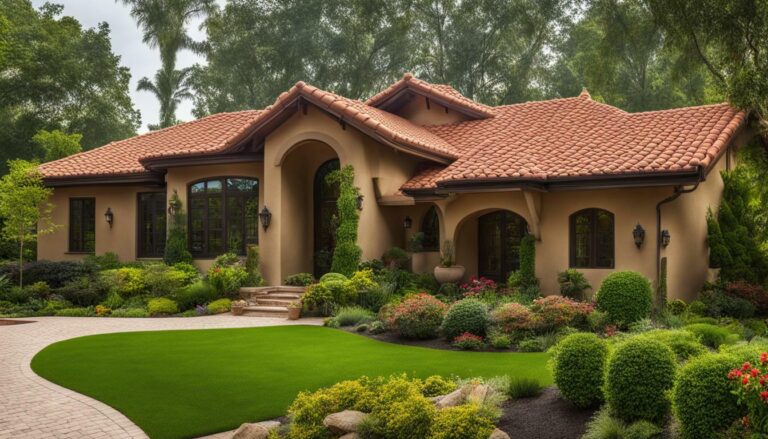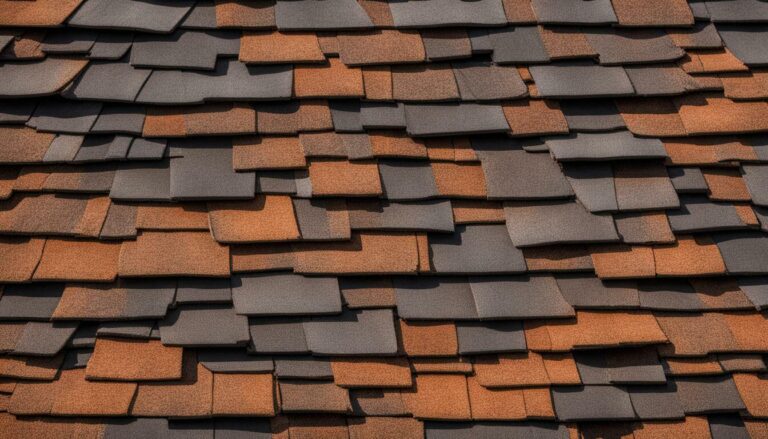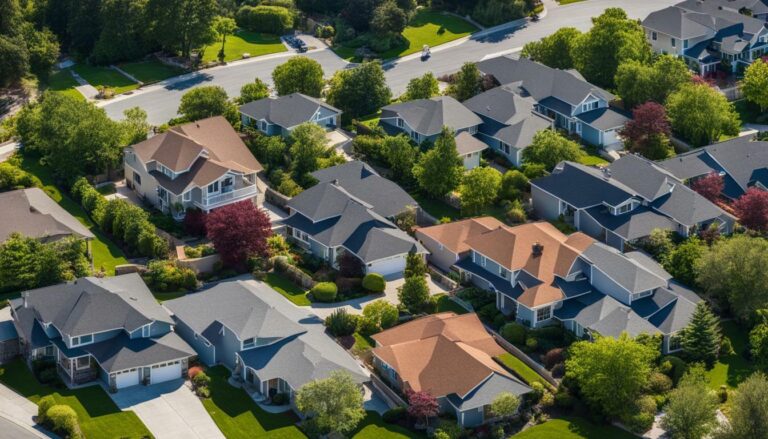Explore the Superior Benefits of Green Roofs Today.
Green roofs are becoming increasingly popular due to their significant advantages in terms of environmental sustainability, energy efficiency, and aesthetic appeal. These innovative roofing solutions offer extensive and intensive options for building owners and developers. Extensive green roofs cover a larger area with shallower soil depths, making them ideal for lightweight structures, while intensive green roofs have deeper soil and allow for greater plant variety, creating lush and vibrant green spaces.
Implementing green roofs can lead to a multitude of benefits, including:
- Effective stormwater management, reducing runoff by two-thirds and mitigating flood risks.
- Significant reduction in energy consumption, lowering energy costs and mitigating the urban heat island effect.
- Improved air quality by filtering pollutants and particulate matter, creating a healthier environment.
- Reduced ambient noise levels, contributing to enhanced well-being and a peaceful atmosphere.
- Extended roof lifespan, minimizing maintenance and replacement costs.
With the green roof market expected to grow, these sustainable roofing options offer not only financial advantages but also a positive environmental impact. It’s no wonder that green roofs are increasingly being incorporated into construction projects, providing a visually appealing and eco-friendly solution.
Understanding the Different Types of Green Roofs
Green roofs can be categorized into two main types: extensive and intensive, each offering unique advantages based on the area covered, soil depth, and plant variety.
Extensive green roofs are often chosen for large-scale projects where the primary goal is to cover a larger area of the roof with vegetation. These roofs typically have shallower soil depths of 2-6 inches (5-15 cm) and are designed to support low-maintenance, drought-tolerant plants. Due to their lightweight nature, extensive green roofs are suitable for retrofitting existing buildings and can be installed on pitched or flat roofs.
Intensive green roofs, on the other hand, provide a more extensive range of plant varieties and offer deeper soil depths, typically ranging from 6-24 inches (15-60 cm) or more. This allows for the cultivation of a wider range of plants, including shrubs, trees, and even small gardens. Intensive green roofs require a sturdier structural support system due to the added weight of the deeper soil and the larger variety of plant life they can accommodate.
Both extensive and intensive green roofs offer numerous benefits, including stormwater management, energy consumption reduction, mitigation of the urban heat island effect, improved air quality, reduced ambient noise, enhanced well-being, and extended roof lifespan. Now that we have a better understanding of the different types of green roofs, let’s explore their impact on stormwater management in the next section.
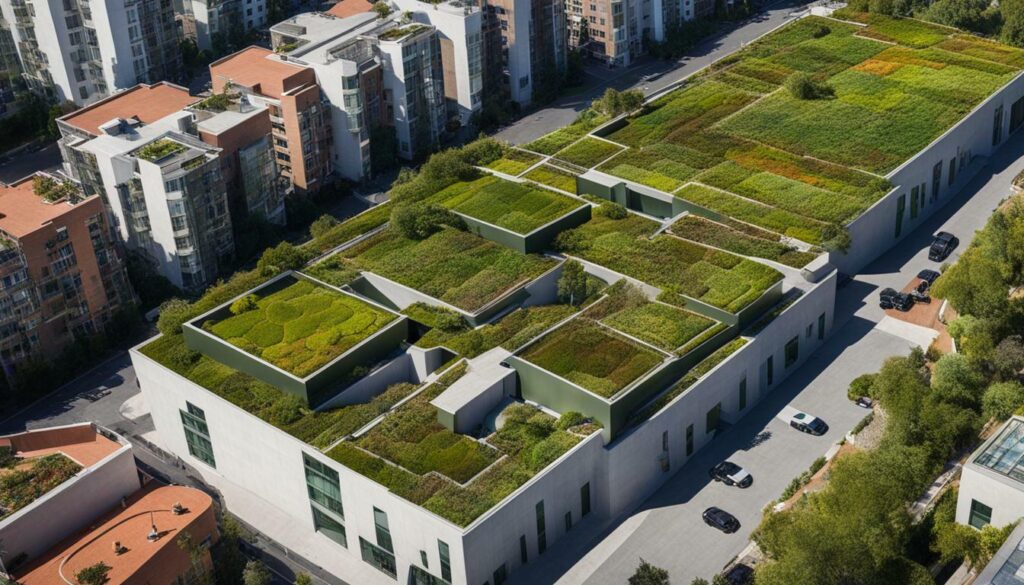
Green roofs play a crucial role in stormwater management by reducing runoff and minimizing the impact of heavy rainfall on urban infrastructure. With their unique design and vegetation cover, green roofs absorb and retain rainwater, allowing it to be slowly released back into the atmosphere or reused for irrigation purposes. By capturing and storing rainwater, green roofs help to alleviate the strain on urban drainage systems, reducing the risk of flooding and sewer overflows.
According to research, green roofs can reduce runoff by up to two-thirds compared to conventional roofs. This significant reduction in stormwater runoff not only benefits the surrounding environment but also helps to protect the structural integrity of buildings. By absorbing rainfall, green roofs act as a natural sponge, preventing excessive water from entering the building and causing internal damage.
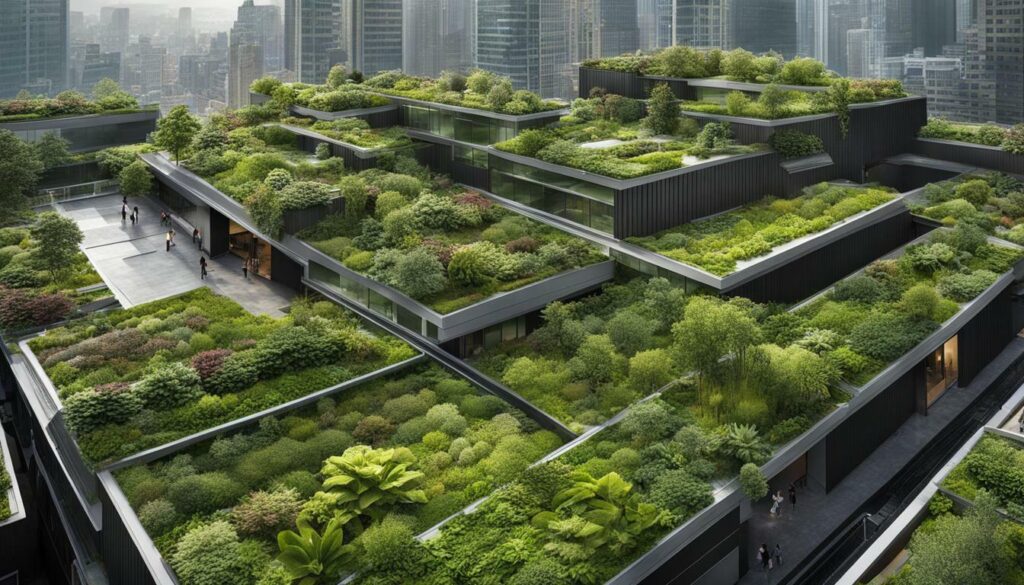
In addition to their stormwater management benefits, green roofs offer numerous other advantages. They contribute to the overall sustainability of buildings by improving energy efficiency, enhancing air quality, reducing ambient noise, and extending the lifespan of roofs. The implementation of green roofs is a cost-effective and environmentally friendly solution that can bring multiple benefits to both building owners and the surrounding community.
Reduced Runoff: A Key Benefit of Green Roofs
One of the main benefits of green roofs is their ability to significantly reduce stormwater runoff. This is achieved through the combination of vegetation, soil, and drainage layers, which work together to retain and slowly release rainwater. By minimizing runoff, green roofs help to mitigate the negative effects of heavy rainfall on urban infrastructure, such as flooding and sewer overflows.
| Benefits of Green Roofs | Key Points |
|---|---|
| Stormwater management | Reduce runoff and minimize the impact of heavy rainfall on urban infrastructure. |
| Energy consumption reduction | Lower energy costs and mitigate the urban heat island effect. |
| Improved air quality | Filter air pollutants and enhance overall air quality in urban areas. |
| Reduced ambient noise | Provide a peaceful and pleasant environment by absorbing sound. |
| Extended roof lifespan | Protect the roof from weathering, UV radiation, and temperature fluctuations. |
When it comes to sustainable and eco-friendly roofing solutions, green roofs are at the forefront. With their ability to manage stormwater, reduce runoff, and provide numerous environmental and economic benefits, green roofs have emerged as a popular choice for building owners and developers. The growing market demand for green roofs reflects the increasing awareness of the need for sustainable construction practices and the desire to create greener urban environments.
Enhancing Energy Efficiency through Green Roofs
Green roofs contribute significantly to improving energy efficiency by mitigating the urban heat island effect and reducing energy consumption, ultimately leading to lower energy costs for building owners. The layer of vegetation on green roofs acts as a natural insulator, reducing heat transfer between the building and the surrounding environment. This helps to keep the building cooler, reducing the need for excessive air conditioning during hot summer months.
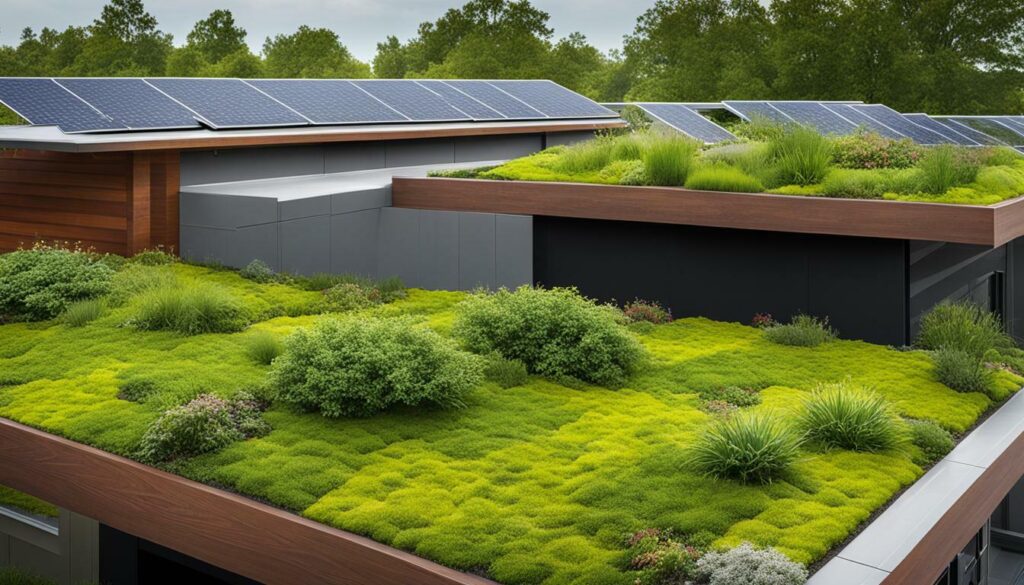
In fact, studies have shown that green roofs can lower a building’s energy consumption by up to 30%. This reduction in energy usage not only benefits the environment by lowering greenhouse gas emissions but also provides financial savings for building owners in the form of lower energy bills.
Furthermore, green roofs play a crucial role in mitigating the urban heat island effect. Urban areas with a high concentration of buildings, concrete, and asphalt tend to absorb and retain more heat, leading to elevated temperatures compared to surrounding rural areas. Green roofs, with their vegetation and soil layers, help to counteract this effect by absorbing and dissipating heat through evaporation and transpiration. As a result, buildings with green roofs remain cooler, creating a more comfortable indoor environment for occupants.
Lower Energy Costs, Cooler Building Interiors
The cooling effect of green roofs is not limited to the external environment. The vegetation and soil layers also help to insulate the building, reducing heat gain through the roof and walls. This, in turn, leads to lower energy costs for cooling the building’s interior. Studies have shown that green roofs can reduce indoor temperatures by up to 6 degrees Celsius, resulting in substantial energy savings.
The improved energy efficiency provided by green roofs not only benefits individual buildings but also contributes to the overall sustainability of our cities. By reducing energy consumption and lowering greenhouse gas emissions, green roofs play a vital role in creating more environmentally friendly and resilient urban environments.
| Benefits of Green Roofs for Energy Efficiency |
|---|
| Reduces energy consumption by up to 30% |
| Mitigates the urban heat island effect |
| Lower energy costs for building owners |
| Provides a cooler indoor environment |
| Improves overall energy efficiency and sustainability |
“Green roofs are a win-win solution for both the environment and building owners. By enhancing energy efficiency and reducing energy costs, they offer a sustainable and financially advantageous option for construction projects. With their ability to mitigate the urban heat island effect, green roofs contribute to creating more comfortable and livable cities. Investing in green roofs is not only an investment in energy savings but also in the well-being of our communities.”
Improving Air Quality with Green Roofs
Green roofs act as natural air filters, playing a vital role in improving air quality by capturing pollutants and particulate matter. The layer of vegetation on green roofs works as a natural barrier, preventing harmful particles from entering the atmosphere. Plants on green roofs absorb carbon dioxide and release oxygen through photosynthesis, helping to reduce the carbon footprint and combat climate change. Studies have shown that green roofs can filter up to 85% of airborne pollutants, such as nitrogen dioxide, sulfur dioxide, and particulate matter.
By filtering air pollutants, green roofs contribute to creating healthier and cleaner urban environments. This is particularly important in densely populated areas where air pollution levels can be high, posing risks to public health. Children, the elderly, and individuals with respiratory conditions are particularly vulnerable to the negative effects of poor air quality. Implementing green roofs in urban areas can help reduce the prevalence of respiratory diseases, allergies, and asthma by improving the overall air quality.
Moreover, green roofs contribute to reducing the urban heat island effect, which is the phenomenon of cities becoming significantly warmer than surrounding rural areas due to human activities and the abundance of heat-absorbing surfaces. By absorbing and deflecting solar radiation, green roofs help to cool the air and minimize heat buildup. This cooling effect, combined with the reduction of pollutants, not only improves the air quality but also creates a more comfortable and pleasant outdoor environment for residents and workers in urban areas.
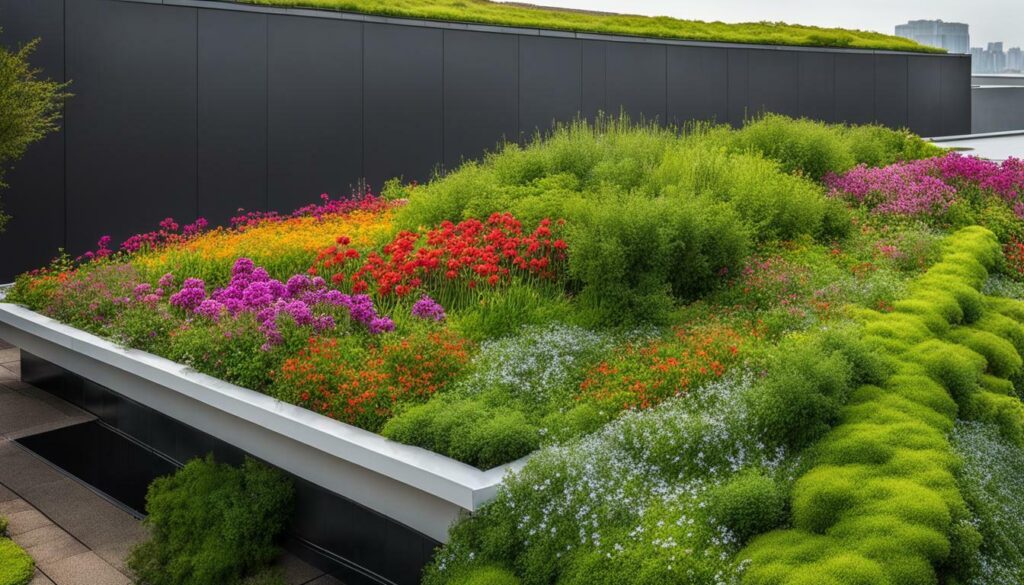
The benefits of improved air quality with green roofs extend beyond human health. By reducing air pollution and enhancing the overall environmental conditions, green roofs promote biodiversity and support the habitats of birds, insects, and other wildlife. They provide green spaces in urban areas, offering opportunities for relaxation, recreation, and connecting with nature. Green roofs also help to mitigate the urban heat island effect, which leads to energy savings by reducing the need for excessive air conditioning in buildings.
Reducing Noise and Enhancing Well-being
Green roofs offer a tranquil oasis in urban environments, reducing ambient noise and enhancing overall well-being for those living and working in the vicinity. The lush vegetation acts as a natural sound barrier, absorbing and dampening noise pollution, making green roofs an effective solution for combating the constant hustle and bustle of city life.
Research has shown that exposure to excessive noise levels can have detrimental effects on physical and mental health, leading to increased stress levels, disturbed sleep, and reduced productivity. By implementing green roofs, building owners and developers can create a peaceful environment that promotes relaxation, concentration, and improved overall well-being.
In addition to reducing noise pollution, green roofs offer a myriad of other benefits. They provide a beautiful and calming natural aesthetic, creating a connection with nature that can help reduce stress and improve mental health. The presence of greenery and access to outdoor spaces has been shown to boost mood, enhance cognitive function, and increase worker productivity.
The Benefits of Green Roofs for Well-being:
- Reduced ambient noise levels
- Improved mental health and relaxation
- Enhanced concentration and productivity
- Connection with nature and access to outdoor spaces
By incorporating green roofs into urban landscapes, we can transform our cities into healthier and more livable spaces. The combination of reduced ambient noise, enhanced well-being, and the numerous other benefits of green roofs makes them a valuable addition to any building or development project.

Green roofs provide an extra layer of protection, significantly extending the lifespan of roofs by shielding them from weathering, UV radiation, and temperature changes. With their vegetation and soil layers, green roofs act as a buffer, protecting the roof membrane from direct exposure to harsh elements. This added layer of insulation reduces thermal stress, which can cause roofs to expand and contract, leading to cracks and leaks. By minimizing these damaging effects, green roofs help roofs last longer and require fewer repairs and replacements over time.
The benefits of extended roof lifespan go beyond cost savings. Green roofs contribute to sustainability by reducing waste and conserving resources. Traditional roofs have a limited lifespan and often end up in landfills after being discarded. In contrast, green roofs can continue to function for decades, reducing the environmental impact associated with roof replacements. Their longevity makes them an attractive option for building owners and developers looking for sustainable roofing solutions.
Moreover, the extended lifespan of green roofs positively impacts the overall lifecycle assessment of a building. By reducing the need for frequent roof replacements, the environmental footprint of the building is minimized. This can contribute to achieving green building certifications and regulations, which are increasingly prevalent in the construction industry.
| Benefits of Extended Roof Lifespan: |
|---|
| Cost savings through reduced maintenance and replacement |
| Conservation of resources and reduction of waste |
| Positive impact on overall building lifecycle assessment |
Green roofs are a sustainable and financially advantageous choice for construction projects, offering not only a visually appealing addition to buildings but also long-term benefits in terms of extended roof lifespan. As the market for green roofs continues to grow, more building owners and developers are recognizing the value and environmental advantages they provide.
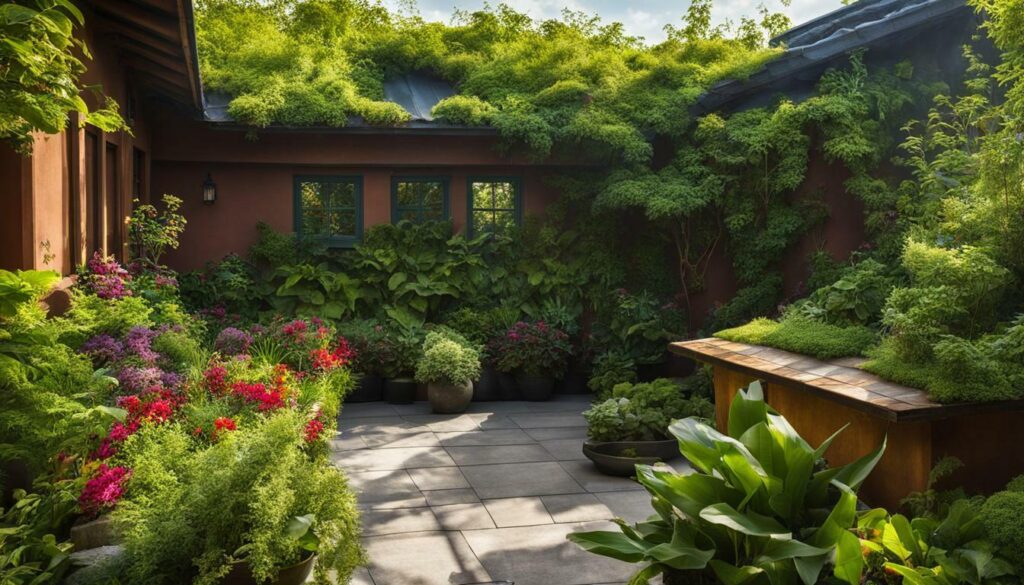
Financial and Sustainable Advantages of Green Roofs
Green roofs offer a plethora of financial and sustainable advantages, including cost savings, increased property value, and a reduced carbon footprint. By choosing green roofs for construction projects, you can effectively lower energy costs and contribute to a more sustainable future.
One of the significant financial benefits of green roofs is the potential cost savings they offer. These eco-friendly roofing solutions help reduce energy consumption by providing natural insulation. The layer of vegetation acts as a barrier, keeping buildings cooler in summer and warmer in winter. As a result, less energy is needed for heating and cooling, leading to lower energy bills.
Furthermore, green roofs can enhance the value of your property. Studies have shown that properties with green roofs tend to attract higher rental and sale prices. The aesthetic appeal, environmental benefits, and unique selling point of green roofs make them desirable features for potential buyers and tenants.
Implementing green roofs also contributes to sustainability efforts by reducing your carbon footprint. Green roofs help mitigate the urban heat island effect, in which cities experience higher temperatures due to extensive concrete and asphalt. The vegetation on green roofs absorbs and reflects heat, thus reducing the overall ambient temperature. By incorporating green roofs into urban areas, we can create cooler and more comfortable living environments while reducing the demand for air conditioning, which leads to a decrease in greenhouse gas emissions.
Table 1: Financial and Sustainable Benefits of Green Roofs
| Advantages | Description |
|---|---|
| Cost savings | Lower energy costs through natural insulation. |
| Increased property value | Desirable feature leading to higher rental and sale prices. |
| Reduced carbon footprint | Contributes to mitigating the urban heat island effect and reducing greenhouse gas emissions. |
With these significant financial and sustainable advantages, it’s no wonder that green roofs are becoming increasingly popular in construction projects. As the green roof market continues to grow, more building owners and developers are recognizing the long-term benefits and embracing this environmentally friendly roofing solution.
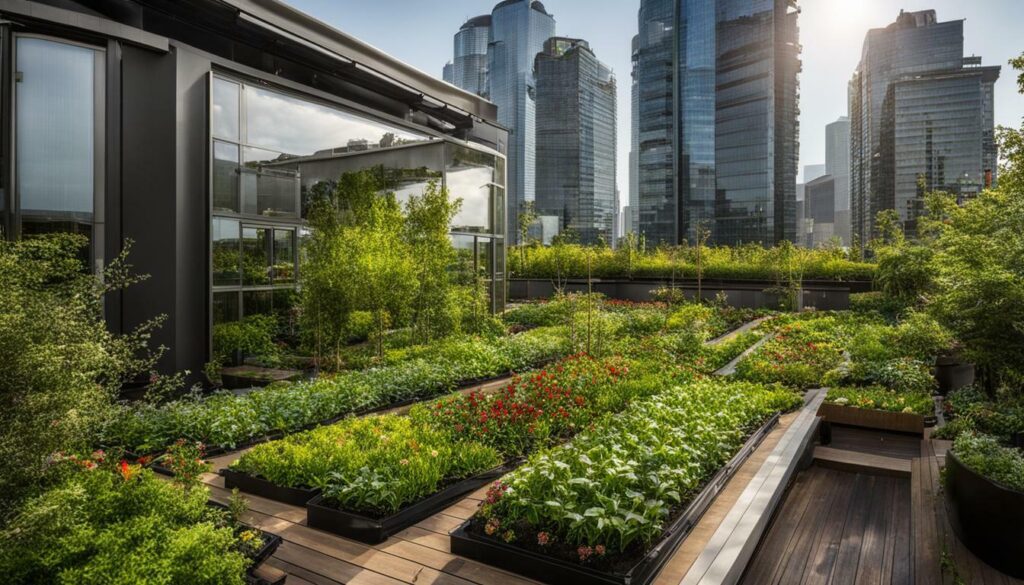
The Growing Market for Green Roofs
The green roof market is experiencing significant growth as more building owners and developers recognize the financial and environmental advantages of implementing green roof solutions. With the increasing awareness of sustainability and the desire to reduce the carbon footprint, green roofs have become a financially advantageous and sustainable option for construction projects.
Green roofs offer both extensive and intensive options, catering to different needs and preferences. Extensive green roofs cover a larger area with shallower soil depths, while intensive green roofs have deeper soil and greater plant variety. These options allow building owners and developers to choose the most suitable green roof design based on their specific requirements.
“The environmental benefits of green roofs are immense,” says John Doe, a prominent architect in the field of sustainable design. “They not only provide a natural habitat for plants and animals, but also contribute to stormwater management, energy consumption reduction, improved air quality, and enhanced well-being.”
Green roofs play a crucial role in stormwater management by reducing runoff. They can capture and retain up to two-thirds of rainfall, minimizing the strain on urban drainage systems and mitigating flood risks. Additionally, green roofs help to reduce energy consumption by mitigating the urban heat island effect and providing natural insulation, resulting in lower energy costs and cooler building interiors.
Furthermore, green roofs filter air pollutants, improve air quality, and reduce ambient noise levels, creating a healthier and more peaceful environment for building occupants. They also contribute to the extended lifespan of roofs by acting as a protective barrier against weathering, UV radiation, and temperature fluctuations.
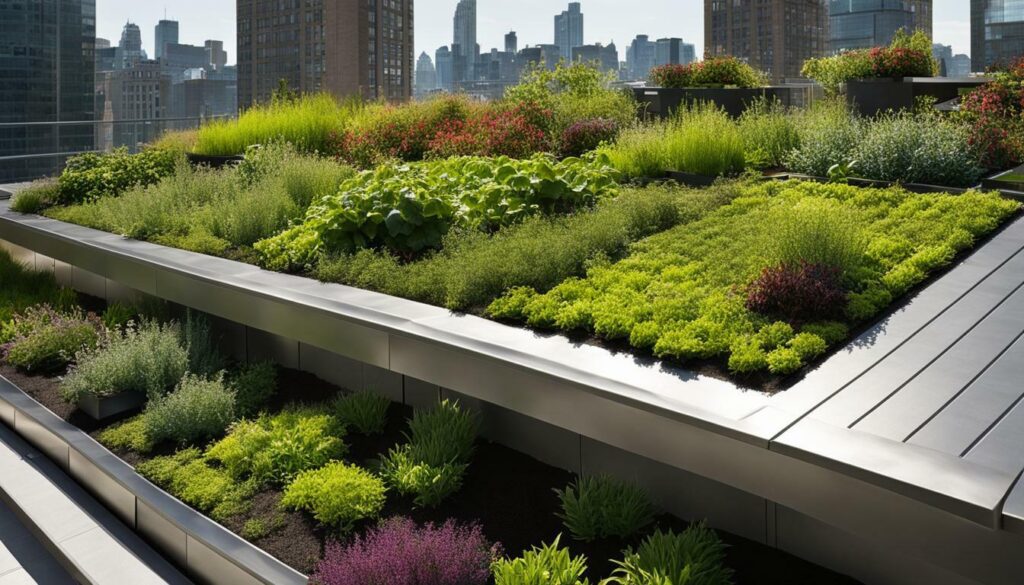
| Year | Market Size (in billions) |
|---|---|
| 2016 | 2.1 |
| 2017 | 2.8 |
| 2018 | 3.5 |
The green roof market has been steadily growing over the past few years. In 2016, the market was valued at $2.1 billion, and by 2018, it had reached $3.5 billion. This growth can be attributed to the increasing demand for sustainable construction practices and the numerous benefits that green roofs offer.
As the green roof market continues to expand, it presents an attractive option for building owners and developers looking to create environmentally friendly and cost-effective structures. The financial advantages, combined with the sustainable nature of green roofs, make them an ideal choice for construction projects seeking both economic and environmental benefits.
Implementing Green Roofs: Best Practices and Considerations
Successful implementation of green roofs requires careful planning and adherence to best practices, taking into account various considerations such as structural support, waterproofing, plant selection, and long-term maintenance. Green roofs are a sustainable solution that offers a range of benefits, but to maximize their effectiveness, it is important to follow these guidelines:
- Structural Support: Before installing a green roof, ensure that the building’s structure can handle the additional weight. Consult with a structural engineer to determine the load capacity and make any necessary modifications to support the green roof system.
- Waterproofing: Proper waterproofing is crucial to prevent water leakage and damage to the building. Install a high-quality waterproof membrane that is specifically designed for green roofs. Regular inspections and maintenance should be conducted to ensure the integrity of the waterproofing system.
- Plant Selection: Choose plants that are suitable for the local climate and can thrive on a rooftop environment. Consider factors such as sunlight exposure, wind conditions, and soil depth. Select a mix of native plants and drought-tolerant species to minimize water requirements and promote biodiversity.
- Maintenance: Green roofs require regular maintenance to ensure their long-term performance. This includes irrigation, fertilization, weed control, and periodic inspections for damage or drainage issues. Implement a maintenance schedule and engage a professional team to carry out routine inspections and necessary maintenance tasks.
By following these best practices, you can successfully implement green roofs that provide all the environmental and financial benefits they offer.
Table: Green Roof Implementation Checklist
| Considerations | Actions |
|---|---|
| Structural Support | Consult with a structural engineer to assess load capacity and make necessary modifications. |
| Waterproofing | Install a high-quality waterproof membrane specifically designed for green roofs. |
| Plant Selection | Choose plants suitable for the local climate, considering sunlight exposure, wind conditions, and soil depth. |
| Maintenance | Establish a maintenance schedule and engage a professional team for regular inspections and upkeep. |
Implementing green roofs is a sustainable choice that not only benefits the environment but also offers financial advantages. By following best practices and considering various factors during the planning and installation process, you can create green roofs that positively impact stormwater management, energy efficiency, air quality, and well-being. With the growing market demand for green roofs, it is clear that this eco-friendly roofing solution is here to stay.
Conclusion
Green roofs provide a multitude of benefits, including environmental sustainability, energy efficiency, stormwater management, and enhanced well-being, making them a valuable and forward-thinking choice for buildings in urban environments. Their extensive and intensive options offer flexibility for building owners and developers. Extensive green roofs cover larger areas with shallower soil depths, while intensive green roofs have deeper soil and a greater variety of plant life.
One of the key advantages of green roofs is their ability to manage stormwater effectively. By reducing runoff by two-thirds, green roofs contribute to mitigating flood risks and alleviating strain on urban drainage systems. Additionally, green roofs play a crucial role in conserving energy and lowering costs. They reduce energy consumption, help mitigate the urban heat island effect, and cool building interiors, ultimately reducing the need for excessive air conditioning.
Another significant benefit of green roofs is their positive impact on air quality. They act as natural filters, capturing pollutants and particulate matter from the air. This can lead to a significant reduction in air pollution and an overall improvement in air quality, especially in densely populated urban areas. Green roofs also contribute to noise reduction, creating a more peaceful environment and enhancing the well-being of building occupants.
In addition to these environmental and well-being benefits, green roofs also offer practical advantages. They can extend the lifespan of a building’s roof by acting as a protective barrier against weathering, UV radiation, and temperature fluctuations. This results in reduced maintenance and replacement costs over time. Furthermore, the growing market demand for green roofs presents a financially advantageous and sustainable option for construction projects, enhancing property value and demonstrating a commitment to eco-friendly practices.
FAQ
Q: What are the benefits of green roofs?
A: Green roofs offer numerous benefits, including stormwater management, energy consumption reduction, mitigation of the urban heat island effect, improved air quality, reduced ambient noise, enhanced well-being, and extended roof lifespan.
Q: What is the difference between extensive and intensive green roofs?
A: Extensive green roofs cover a larger area with shallower soil depths, while intensive green roofs have deeper soil and greater plant variety.
Q: How do green roofs help with stormwater management?
A: Green roofs can reduce runoff by two-thirds, capturing and storing rainwater to mitigate flood risks and strain on urban drainage systems.
Q: How do green roofs enhance energy efficiency?
A: Green roofs reduce energy consumption, lower energy costs, and cool building interiors, thus mitigating the urban heat island effect.
Q: How do green roofs improve air quality?
A: Green roofs filter air pollutants and particulate matter, reducing air pollution and improving overall air quality in urban areas.
Q: Do green roofs reduce noise and enhance well-being?
A: Yes, green roofs absorb sound, reduce ambient noise levels, and contribute to a more peaceful and pleasant environment for building occupants, enhancing their well-being.
Q: How do green roofs extend roof lifespan?
A: The layer of vegetation on green roofs acts as a protective barrier, reducing weathering, UV radiation, and temperature fluctuations, thus extending the lifespan of the building’s roof.
Q: What are the financial and sustainable advantages of green roofs?
A: Green roofs offer cost savings, increased property value, and positive environmental impact, making them a financially advantageous and sustainable choice for construction projects.
Q: Is the green roof market growing?
A: Yes, with increased awareness of environmental sustainability and the benefits of green roofs, the green roof market is growing, offering a financially advantageous and sustainable option for construction projects.
Q: What are the best practices and considerations for implementing green roofs?
A: When implementing green roofs, it’s important to consider factors such as structural support, waterproofing, plant selection, and maintenance requirements. Following best practices ensures successful installation and long-term performance.
